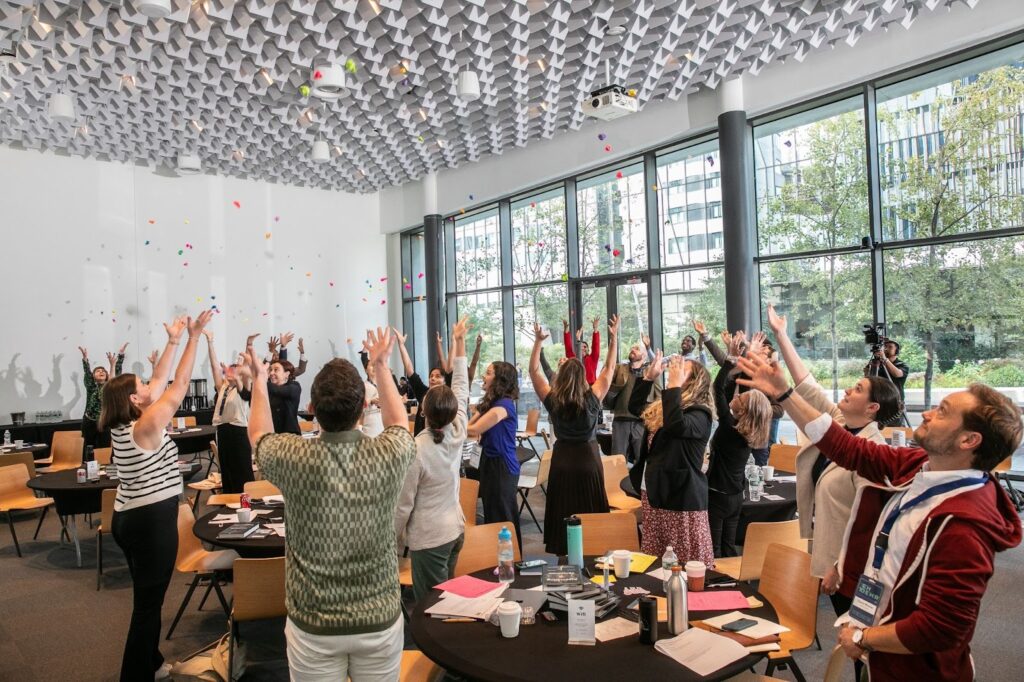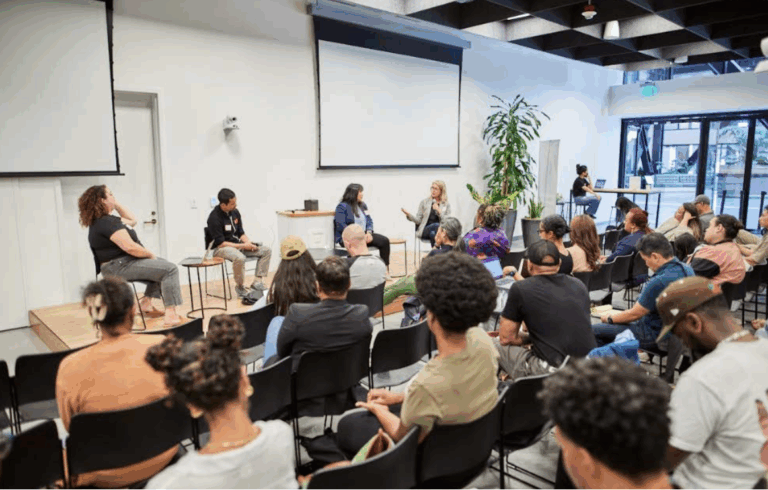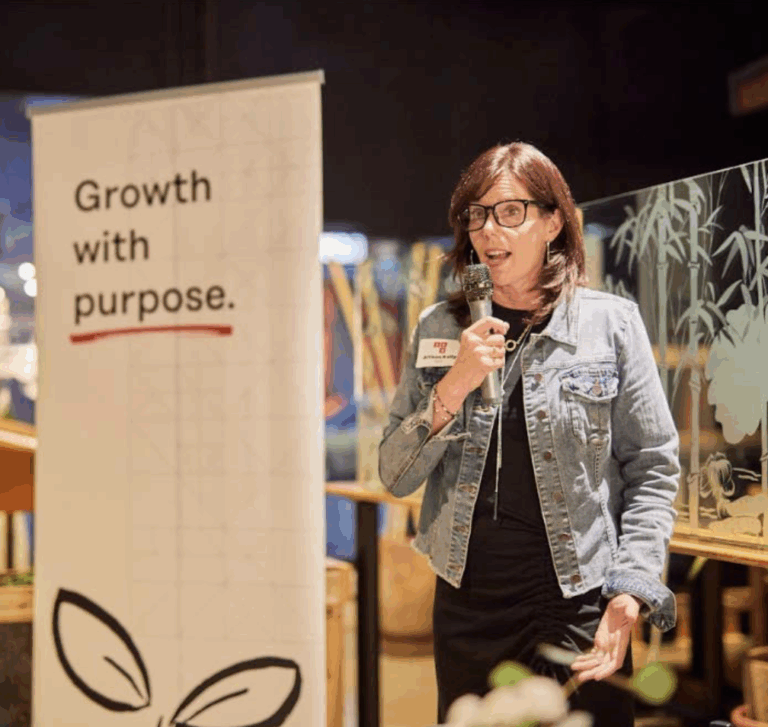The trajectory of technological innovation is not predetermined—it is shaped by our collective choices, investments, and imagination. Since hosting our inaugural Tech Together in 2024, Siegel and our partners have been asking: What futures do we want to imagine—and more importantly, to enable? And what resources, partnerships, and shared visions will it take to realize them?
One thing has become clear: in the face of concentrated power in Big Tech, if we do not combine our influence to guide innovation and support alternatives, others will determine that trajectory for us. As AI systems grow more powerful and pervasive, the urgency of building a robust public interest technology ecosystem has never been greater.
It is through this lens that we once again gathered for Tech Together 2025.
Tech Together is an annual convergence point for the public interest technology (PIT) ecosystem—a structured space where capital allocators can build partnerships, share knowledge, and align efforts to shape improbably better futures. With support from our co-hosts and sponsors—the GitLab Foundation, Heising-Simons Foundation, Patrick J. McGovern Foundation, Omidyar Network, Public Interest Tech Fund, and Siegel Family Endowment—we designed a day-and-a-half agenda that focused on strengthening community across boundaries, expanding our collective imagination of the futures technology can enable, and advancing the field’s shared capacity to turn vision into action.
Not a Conference, But a Collaboration
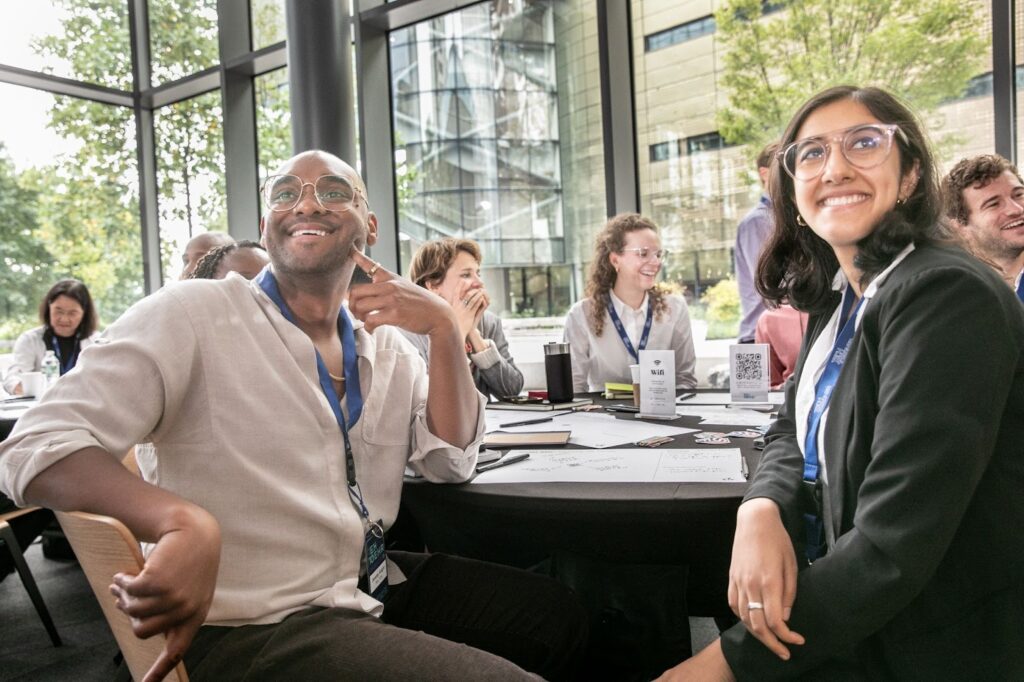
In the midst of UNGA and Climate Week—a crowded week of panels and presentations—we designed Tech Together to be something different: an in-person working session with screens down, sleeves rolled up, and masks off as we came together as a community ready to chart new paths and partnerships forward.
This gathering wasn’t about celebrating or condemning technology and AI, but rather steering and shaping technology toward the futures we want. Together, we interrogated what’s possible, identified what’s missing, and explored the role each of us can play in bending the trajectory of technological development toward justice, equity, and human flourishing.
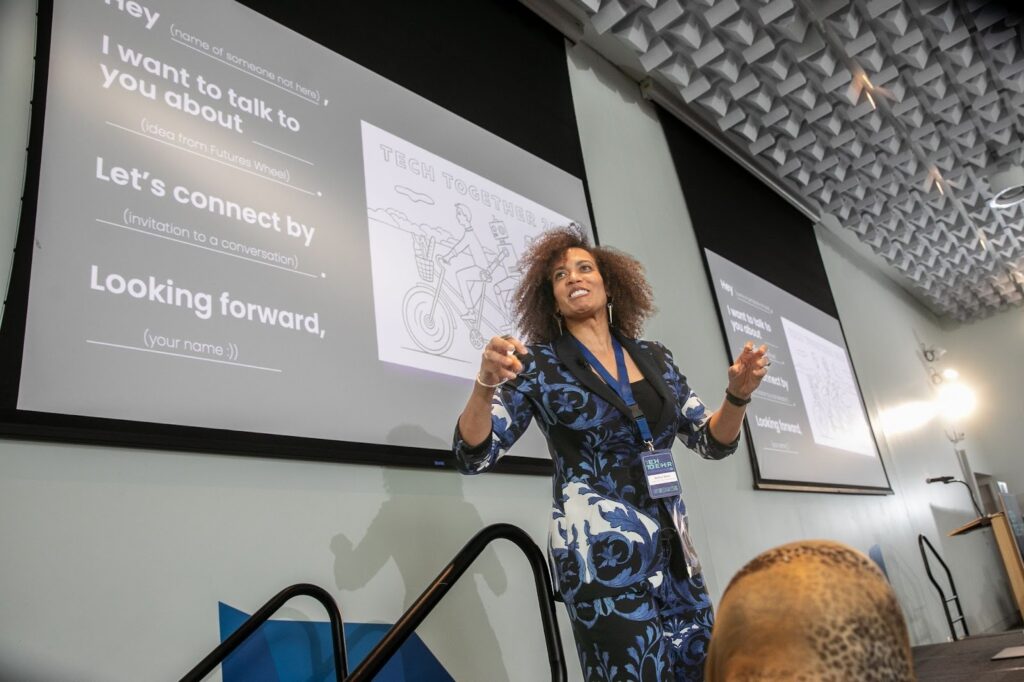
Our emcee, Aisha Bain, social innovation designer and futures facilitator, helped us do just that. She guided us through two days of collective practice, focusing on two critical skills: forecasting and building narrative infrastructure. By defining terms, questioning assumptions, and stretching our imagination, Aisha invited the group into creativity and courage. As she reminded us: “Just like a compass, there is more than one way to get there. We can create multiple strategies, multiple pathways—and in fact, our just futures depend on it. We must grow our practice of visioning, because if we don’t know what it looks like, how will we know if what we’re doing today is the right path to get us there?”
Read more about our goals and key takeaways below
1. Digital rights are human rights
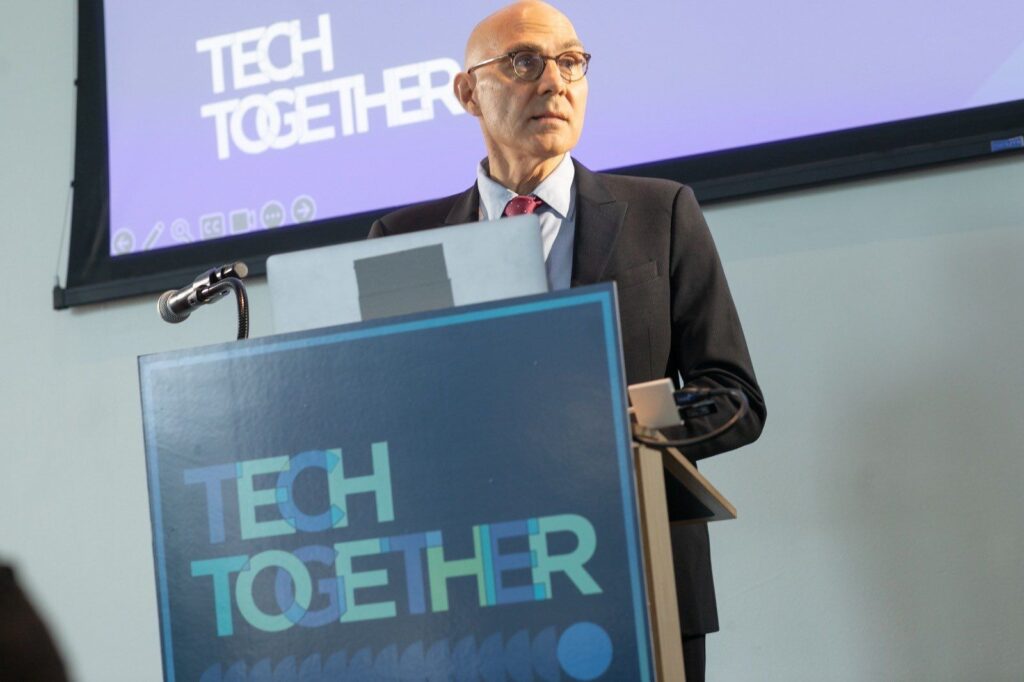
We were honored to be joined by Volker Türk, United Nations High Commissioner for Human Rights, who reminded us that digital rights are human rights. He spoke powerfully about technology as the new frontline of human rights, underscoring both its promise and its peril. From preserving Indigenous languages to expanding access to education and healthcare, digital systems can open up extraordinary opportunities for equity and inclusion. Yet, if left unchecked, they risk deepening inequality, eroding privacy, and silencing dissent. Türk called on states, companies, civil society, and philanthropy alike to anchor technology in universal human rights values—building digital governance rooted in dignity, transparency, and participation. His message was clear: safeguarding human rights must be at the heart of how we design, deploy, and govern technology.
2. Futures-thinking is muscle, not magic.
Our partners at the Stanford d.school launched the hands-on portion of Tech Together with a workshop in strategic forecasting—a practice that helps us move from reacting to the future to proactively imagining and shaping it. The workshop introduced core forecasting concepts while letting participants immediately apply them to their own work. Participants worked in pairs starting with real short-term trends (for example, self-driving cars) and projecting out second- and third-order effects that might emerge (such as new black markets for organs, to shifts in car insurance premiums, to time saved for busy parents). From there, we mapped the actions needed to manifest or mitigate these effects, as well as the open questions that remain.
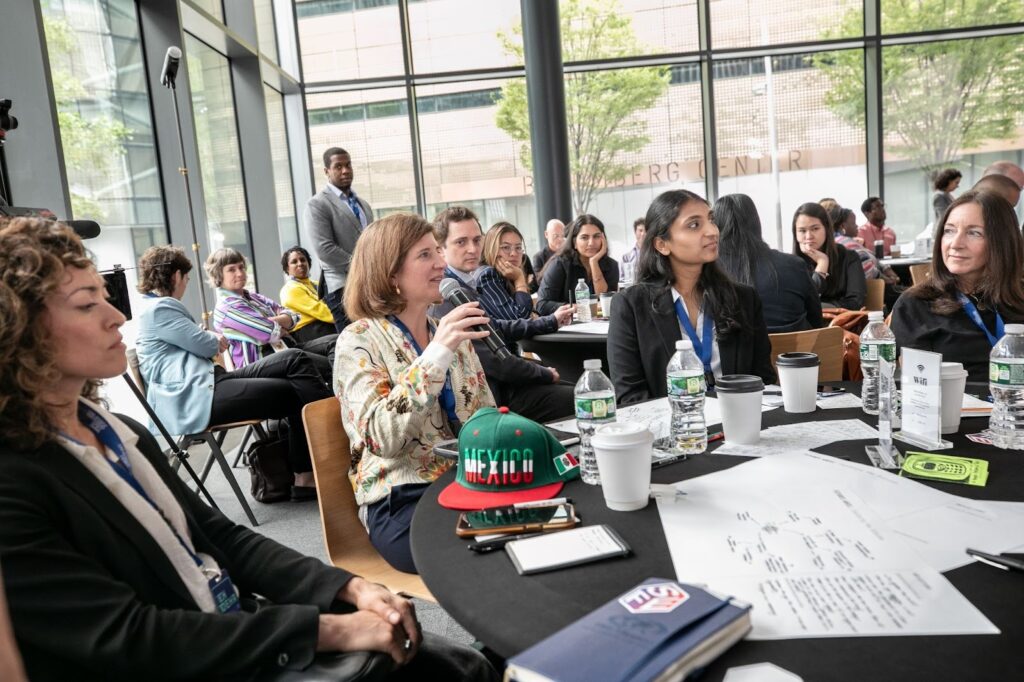
As facilitator Lisa Kay Solomon reminded us, many of us have taken history classes, but almost none of us have taken a futures class—yet the future is the only subject we can truly shape. Participants left with tools and templates to repeat this process with their home institutions and communities.
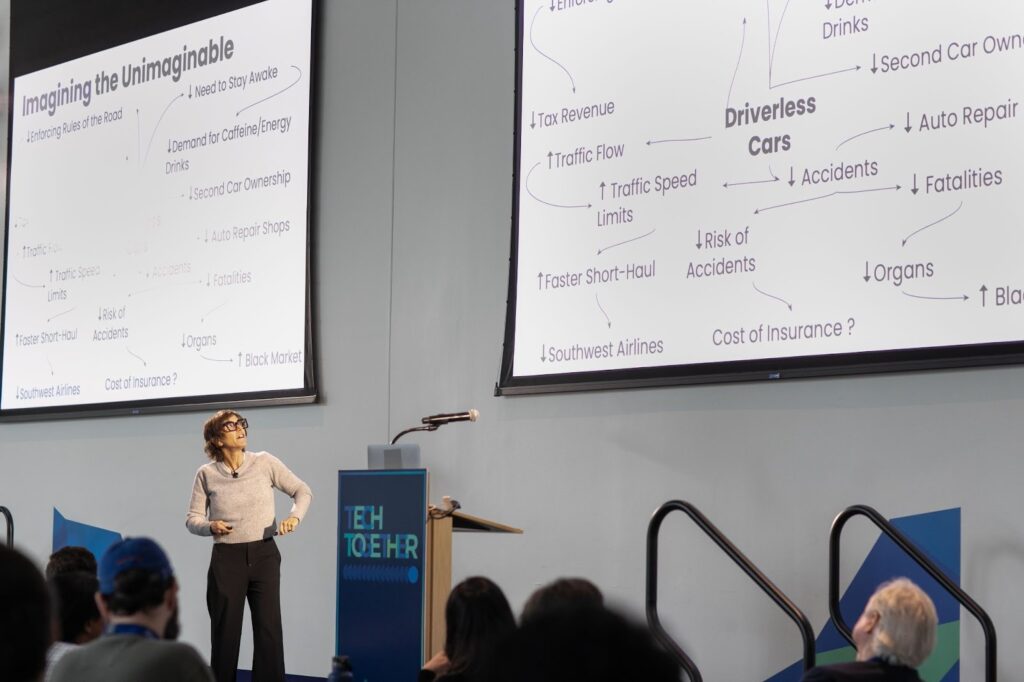
3. The future is plural—and ours to shape.
Too often we fall into the trap of believing there is only one trajectory for technology, as if the future were inevitable. But in reality, there are multiple futures, and the work is in deciding which ones we want to bring into being.
We illustrated this through a panel performed from the future, which we called AI 2040. Leaders from some of today’s most influential AI governance initiatives—Wafa Ben-Hassine (Omidyar Network), Nick Cain (Patrick J. McGovern Foundation and Current AI), B Cavello (Aspen Digital), and Felecia Webb (Partnership on AI)—shared their visions for the year 2040, showing how their distinct approaches could converge into an ecosystem for change.
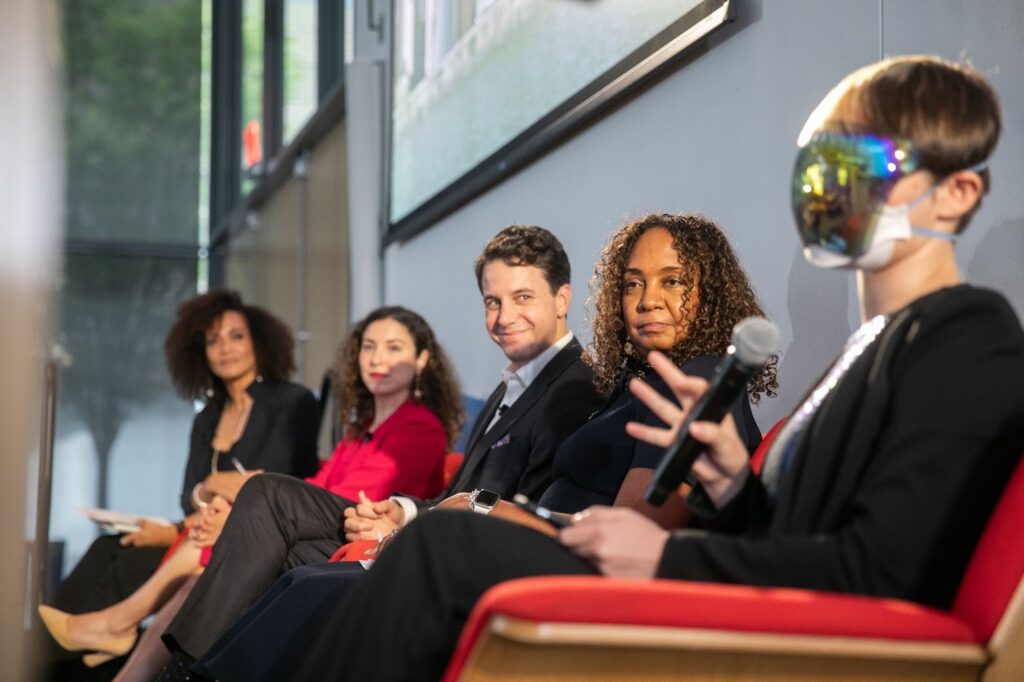
Rather than simply describing possibilities, our panelists stepped into them, taking on their imagined future titles as global governance negotiators, leading tech litigators, or founders of a global AI accountability network. With the help of our emcee, who guided our imagination by narrating events yet to unfold, the exercise brought foresight to life and reminded us that shaping the future requires more than analysis, it requires practice.
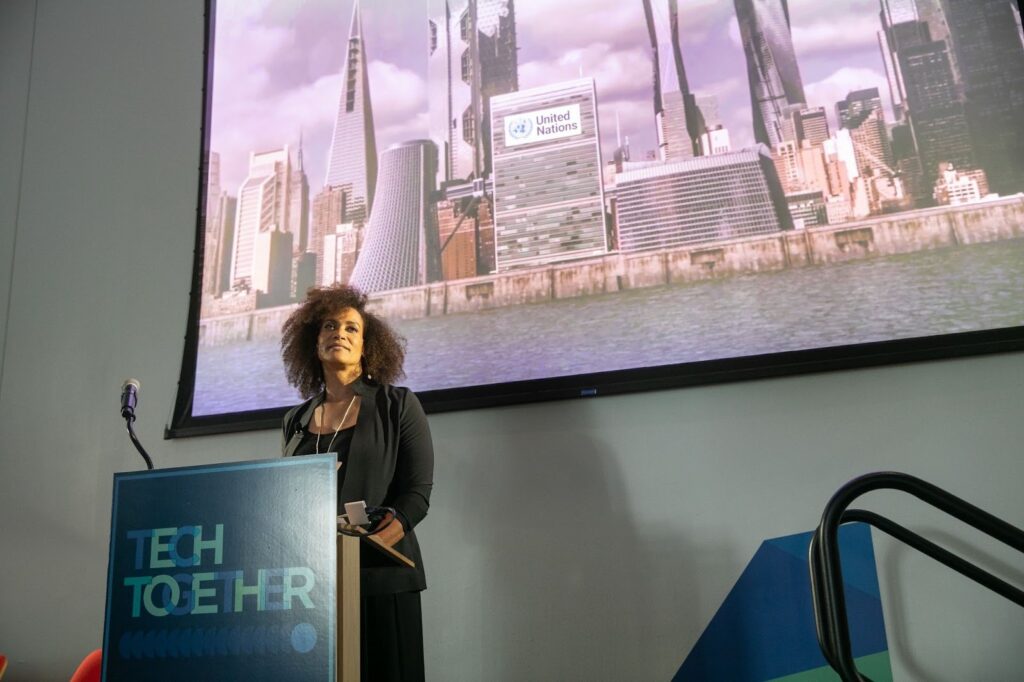
1. Agency is power
Whether it’s governments designing infrastructure, workers navigating job transitions, or young people turning to bots for connection, the central question is the same: how does emerging technology redistribute—or reinforce—power? That thread ran through the five thematic group discussions curated by partner foundations, where participants took the skills and perspectives from the morning and applied them to their own areas of grantmaking. Sessions explored Climate Justice + Public Interest Tech (led by the Mozilla Foundation), Economic Prosperity + AI (led by the GitLab Foundation), K–12 Education + Public Interest Tech (led by Siegel Family Endowment and the Kapor Foundation), Human Connection + AI (led by the Omidyar Network), and Democracy + AI (led by the Packard Foundation).
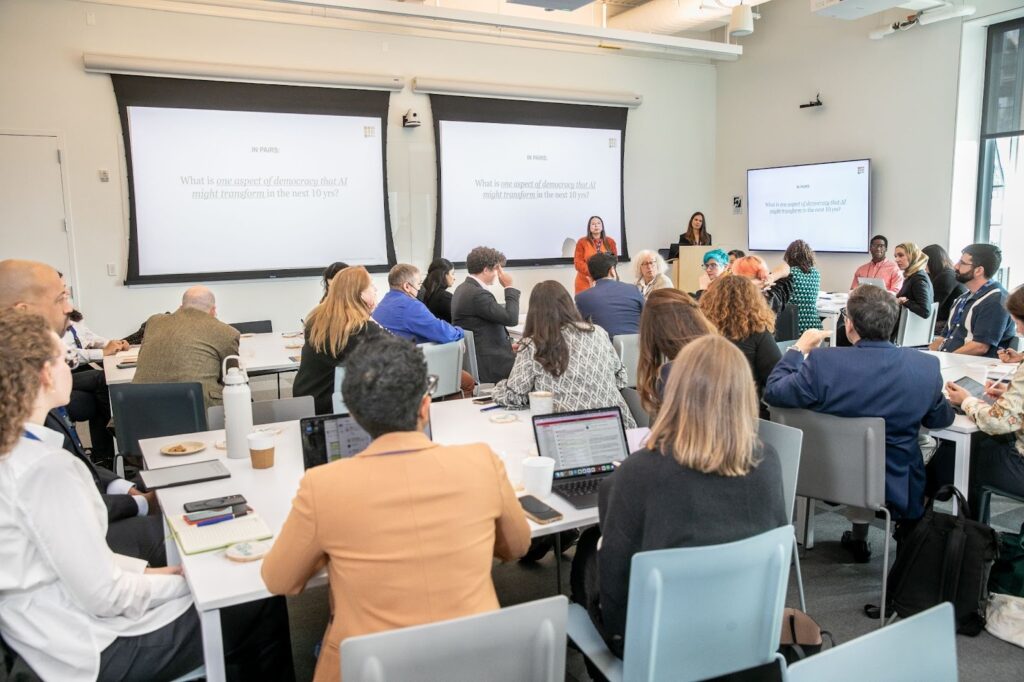
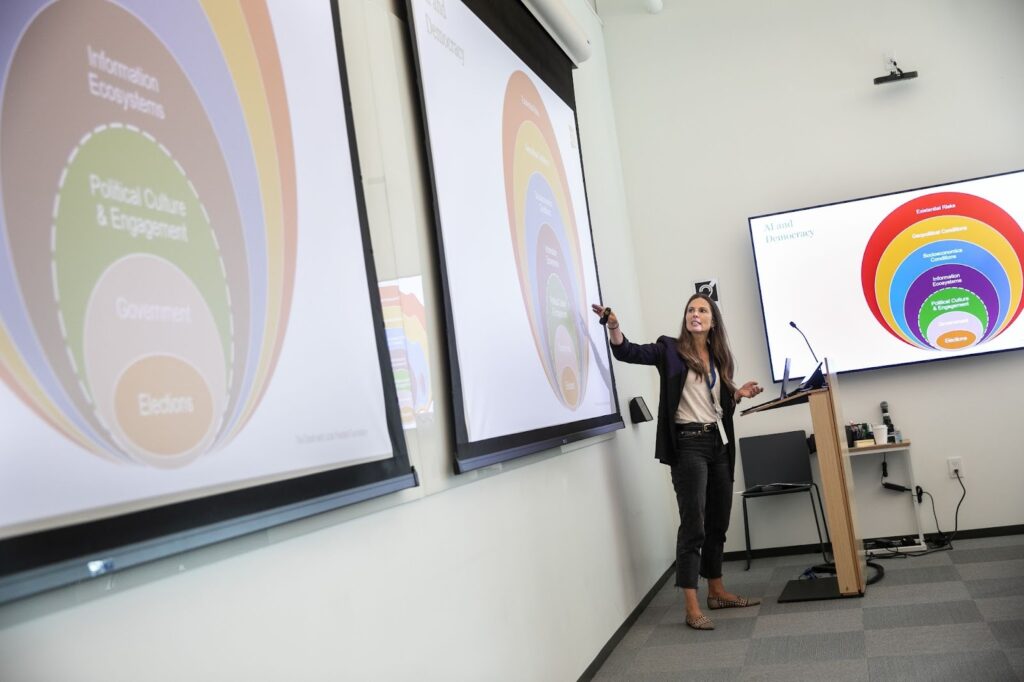
Across these conversations, a common theme emerged: agency matters. As one group put it, “Live in the future. Build what’s missing.” Simple but strategic interventions like open-source data center planning tools, civil society mapping projects, or stronger NGO–local government connections can give communities real power over technological change. Data center expansion, an example surfaced from the Climate Justice group, should be guided by accessible planning and mapping tools so that governments and civil society can make informed choices before growth happens.
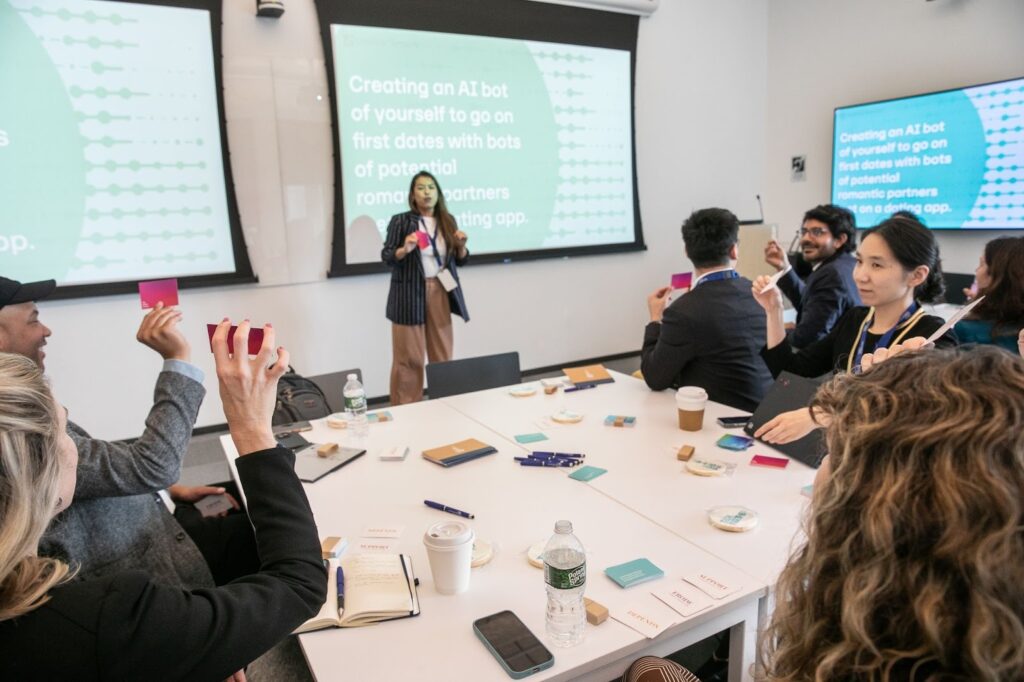
2. Infrastructure defines impact.
Another common thread from the thematic groups was that infrastructure is what shapes outcomes. Whether in democracy, economic prosperity, education, human connection, or climate justice, participants emphasized that the real impact of emerging technologies depends less on the tools themselves and more on the human, institutional, and regulatory systems we build around them.
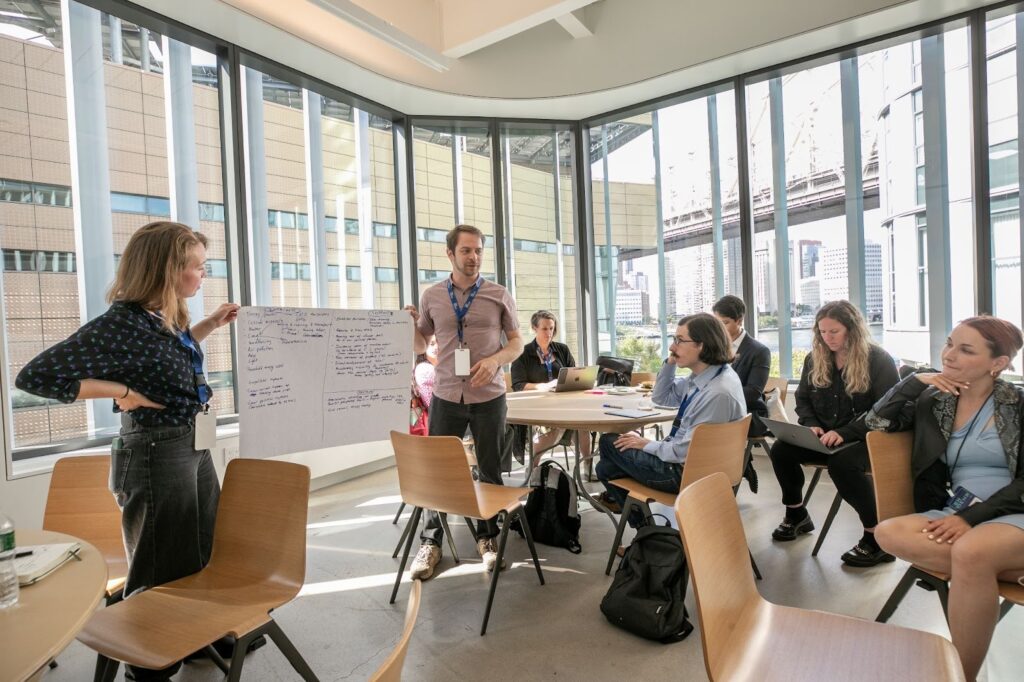
Each sector has its own agenda, but the challenge is to connect those agendas so we’re moving in the same direction. Infrastructure is never neutral—our choices today will determine whether technology deepens inequities or expands possibilities. Building collective skill around systems design and alignment is essential. The K–12 Education + Public Interest Tech group, for example, reframed EdTech as a matter of justice and civic engagement, underscoring the need for infrastructure like aligned funding strategies, teacher training pipelines, and capacity building to scale responsible, equity-driven technology in schools.
The conversations underscored that infrastructure defines impact. Aligning across sectors is what will allow philanthropy and civil society to steer technology toward public good outcomes.
1. Whoever Defines the Frame Defines the Future
On Day 2, our opening fireside with Ellie Bertani (GitLab Foundation), Rumman Chowdhury (Humane Intelligence), and Katy Knight (Siegel Family Endowment) explored how narratives shape technological development, from venture capital decisions to public policy, and why civil society must craft compelling alternatives to Big Tech’s dominant frames of inevitability, speed, and techno-solutionism. The conversation underscored that the way we frame technology determines whose voices matter, what futures feel possible, and whether we remain in a posture of resistance or move toward proactively building the systems our communities actually need.
We experimented with a “360 moderator” format: panelists took turns interviewing one another, literally and symbolically passing the microphone around the circle. This format reflected the very principle under discussion—redistributing power, elevating diverse expertise, and fostering curiosity by inviting different ways of seeing and questioning.
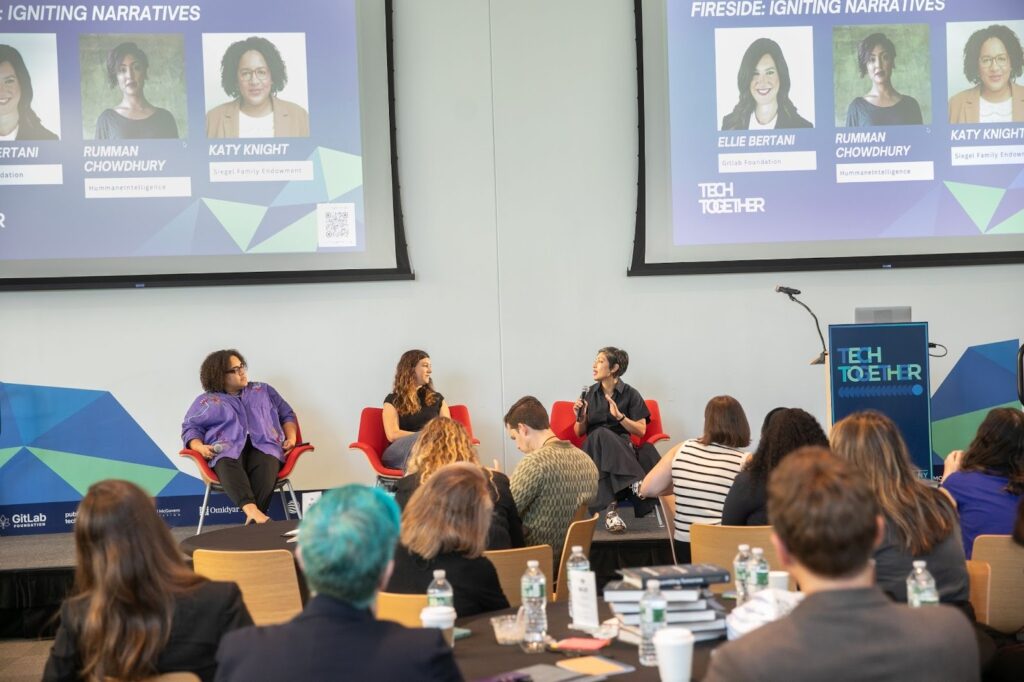
2. Narratives Are the Infrastructure of Imagination
Emily Best (Seed&Spark) and Sara M. Watson ((m)otherboard) led a workshop on narrative infrastructure – distinguishing it from storytelling; breaking down myths; and emphasizing its role in shaping public imagination, funding priorities, and the long-term legitimacy of public interest technology. Participants first examined the dominant tech narratives we are steeped in—who benefits from them, what they obscure, and how they constrain our sense of possibility.
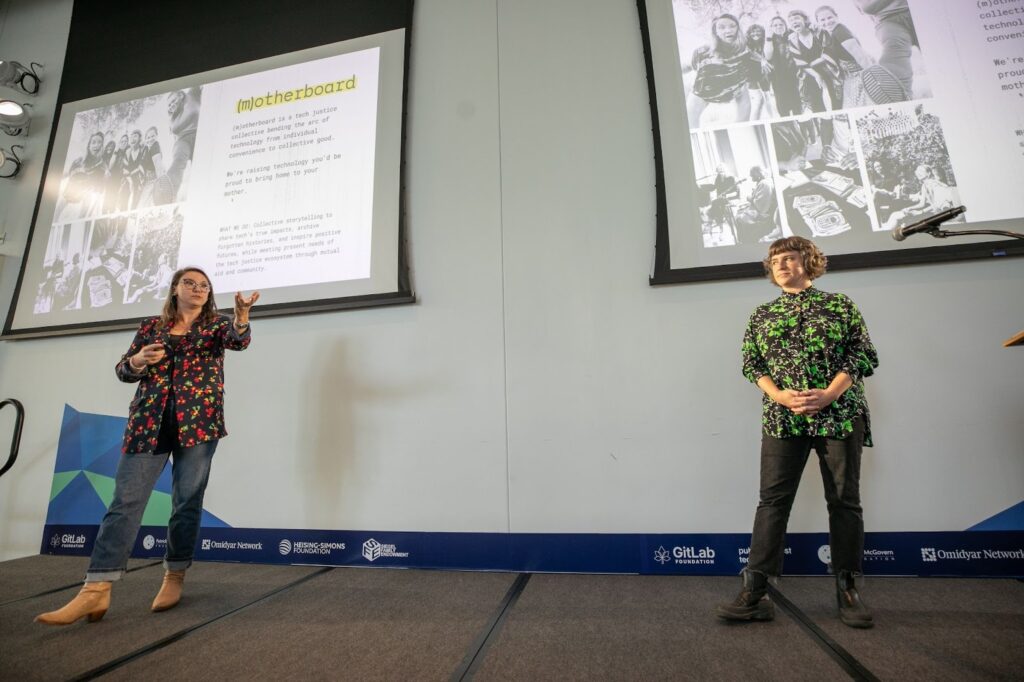
From there, groups moved into prototyping: drafting short-form narratives, frames, and campaigns that articulated more just and human-centered visions for technology. The exercise highlighted that narratives aren’t simply “communications”—they are the deep infrastructure that determines which futures feel possible, urgent, and fundable. Building new narrative infrastructure is essential if we want to move beyond resistance toward proactive, collective vision.
Read the full workshop materials here.
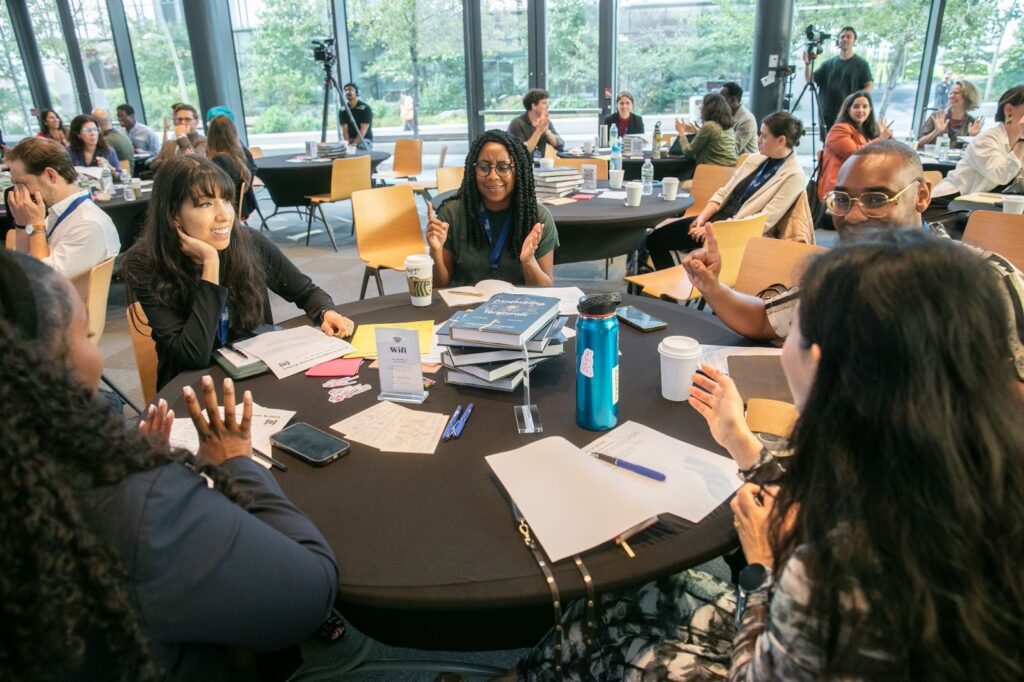
3. Joy sustains this work
Behind every strategy session and funding decision are people who find real joy in the world as it is—even as we labor to make it better. We closed by sharing “reasons to be cheerful”: small joys and big hopes that sustain us, the personal fuel that powers collective work toward more humane technology. These moments of connection and shared humanity remind us that shaping technology’s future is not only necessary—it can also be joyful.
